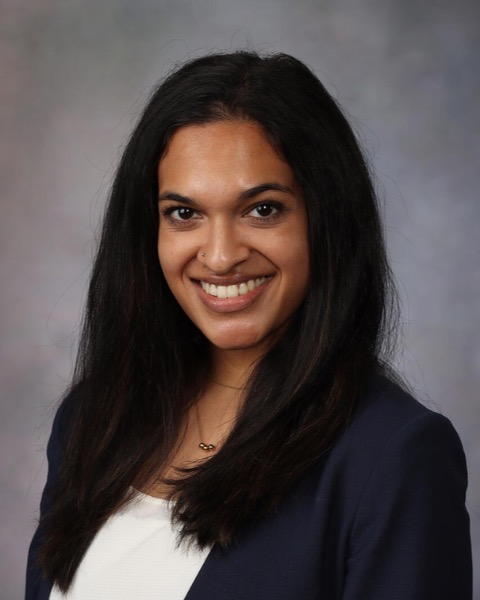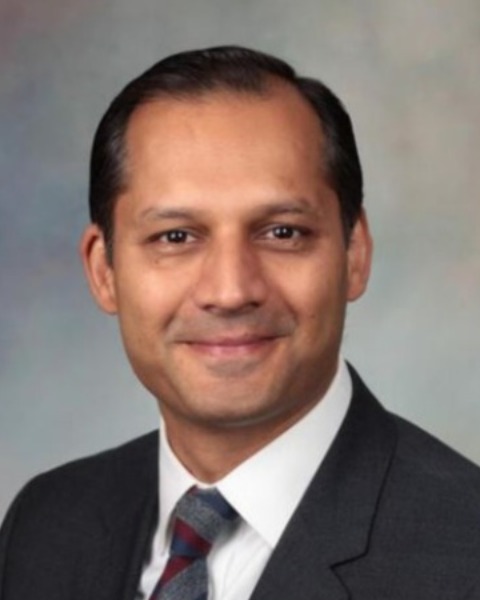Sarcoma
non-CME
P63: Is there a benefit to radiation and surgery in specific histologic subtypes of retroperitoneal sarcoma?

Chee-Chee H. Stucky, MD
Assistant Professor of Surgery
Mayo Clinic
Scottsdale, Arizona, United StatesDisclosure(s): No financial relationships to disclose

Anagha Deshpande, MS
medical student
Mayo Clinic Alix School of Medicine, Scottsdale, Arizona, United StatesDisclosure information not submitted.
- RB
Richard Butterfield, M.A.
Biostatistician
Department of Biostatistics, Mayo Clinic Arizona, United StatesDisclosure information not submitted.
- JA
Jonathan Ashman, MD
Professor of Radiation Oncology
Mayo Clinic Arizona, United StatesDisclosure information not submitted.
.jpg)
Sanjay P. Bagaria, MD
Professor of Surgery
Mayo Clinic
Jacksonville, FL, United StatesDisclosure information not submitted.

Travis E. Grotz, MD
Assistant Professor
Mayo Clinic
Rochester, Minnesota, United StatesDisclosure(s): No financial relationships to disclose
- CT
Cornelius A. Thiels, DO, MBA
Assistant Professor
Division of Hepatobiliary and Pancreas Surgery, Mayo Clinic, United StatesDisclosure information not submitted.

Nabil Wasif, MD, MPH
Professor of Surgery
Mayo Clinic Arizona
Phoenix, Arizona, United StatesDisclosure information not submitted.
Author(s)
Poster Presenter(s)
Author(s)
Methods: 222 patients undergoing R0/R1 resection were studied retrospectively. We defined local recurrence (LR) as tumor at the site of resection performed at our institution and distant recurrence (DR) as intraperitoneal disease, tumor away from resection, or distant metastases. Univariate predictors of LR and local or distant recurrence (LDR) (accounting for death as competing risk), local recurrence-free survival (LRFS), disease free survival (DFS) and overall survival (OS) were compared between treatment modalities and histologic subtype using Gray k-sample and Logrank tests.
Results:
157 patients had SurgRT: 28.7% WDL, 37.6% de-differentiated/pleomorphic sarcoma (DDPS), 28.7% leiomyosarcoma (LMS). Median follow-up=55 months and median OS=89 months (78-123 months). DDPS and LMS were associated with worse OS (p < 0.001), LRFS (p=0.001) and DFS (p < 0.001). 5-year LR was associated with histology (26% WDL, 45% DDPS, 18% LMS, p=0.0015) as was 5-year LDR (26% WDL, 53% DDPS, 51% LMS, p=0.0013).
Overall, SurgRT did not affect OS or DFS but trended toward improved LRFS (p=0.160). SurgRT was significantly associated with improved LR as well as LDR (Table 1). By histology, SurgRT was associated with improved LRFS in DDPS (p=0.0181) and LMS (p=0.0180) but not WDL (p=0.7237).
Among IORT patients who received radiation (n=113), 33 (29%) experienced LR, 50% of these recurred at the site of IORT. There was no benefit in DFS or LRFS with IORT and slightly worse OS (Table 1). IORT was associated with improved LDR [HR=0.51 (CI=0.31-0.83), p=0.0093] but not LR. This finding was upheld when primary and recurrent tumors were analyzed separately (p=0.0041 and p=0.0185, respectively).
Conclusions: SurgRT improves LR in DDPS and LMS but not WDL. While no true survival benefit is seen by RT, it is possible that patients with lower LR risk after SurgRT may ultimately experience improved quality of life.
Learning Objectives:
- list histologic subtypes in retroperitoneal subtypes that may benefit from surgery plus radiation therapy.
- describe risks of local recurrence in retroperitoneal sarcoma.
- define benefits of intraoperative radiation therapy in the treatment of retroperitoneal sarcoma.
